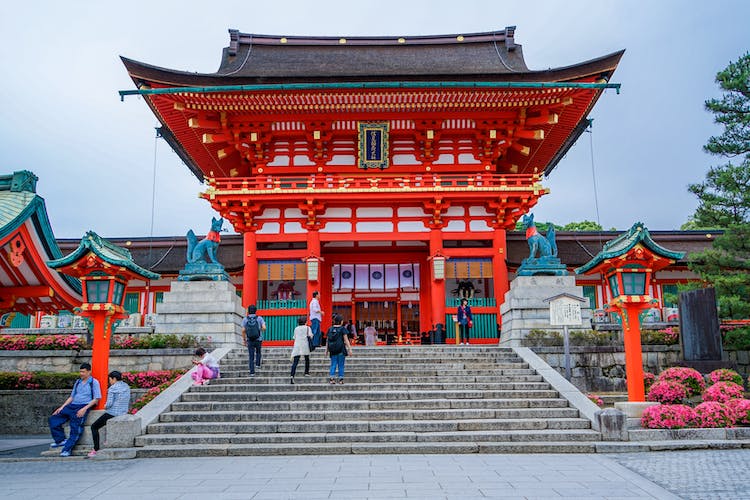

The best times to visit Japan are between March and May or September and November when the weather is warm and dry. Spring is popular because of the cherry blossoms, but it can get crowded.
We’ve created a season-by-season guide to help you decide when and where to go based on what you want to see, how many people you want around, and how much rain you can handle.
Each of Japan’s four seasons has its advantages and disadvantages. In this blog, We’ll explain what to expect in winter, spring, summer, and fall so you can pick the best time to visit based on your preferences.
Also, read this: Best Time To Visit San Francisco
Spring (March to May)
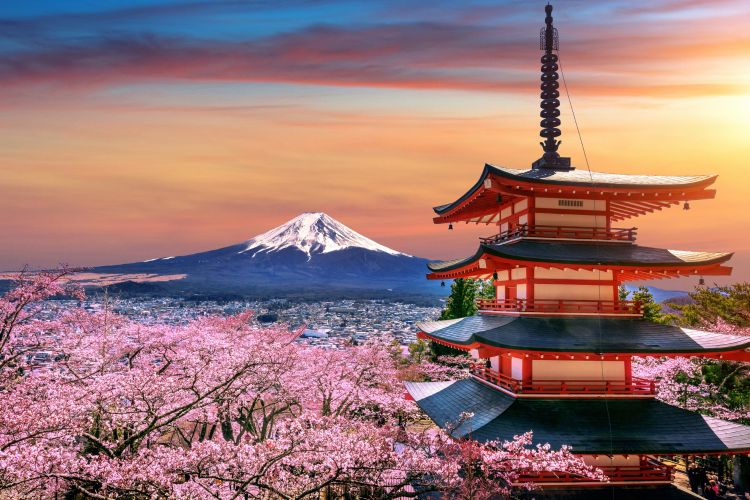
Spring in Japan is a beautiful and popular season for visitors. With mild temperatures ranging from 10°C to 20°C (50°F to 68°F), it’s perfect for outdoor activities.
This season is famous for cherry blossoms, or sakura, which bloom from late March to early April, depending on the region. These delicate pink flowers attract millions of visitors worldwide. Cherry blossoms are important in Japanese culture, symbolizing life’s fleeting beauty and renewal.
During this time, people join hanami, or flower viewing parties, gathering under the blooming trees for picnics and celebrating spring. Parks and streets filled with cherry trees create a magical atmosphere.
Spring also brings other flowers like plum blossoms and wisteria, adding more color and fragrance to the scenery. The pleasant weather, vibrant flowers, and cultural events make spring an ideal time to visit Japan.
Highlights:
- Cherry Blossom Festivals (Hanami): People celebrate by having picnics under cherry blossom trees. These festivals take place in parks and gardens, where families and friends gather to eat, drink, and enjoy the stunning views.
- Popular Destinations: Tokyo, Kyoto, and Osaka are great places to see cherry blossoms. These cities have famous parks and historical sites that become even more beautiful during cherry blossom season.
Events and Festivals:
- Golden Week: Golden Week is a big holiday from late April to early May with many celebrations. It includes several national holidays, such as Showa Day, Constitution Memorial Day, Greenery Day, and Children’s Day. During Golden Week, many Japanese people travel, so it’s a lively time with lots of events and activities.
- Hina Matsuri (Doll Festival): The Hina Matsuri festival in March celebrates girls and their happiness. Families with daughters display special dolls and pray for their health and happiness.
Travel Tips:
- Best Viewing Spots for Cherry Blossoms: Some of the best places to see cherry blossoms are Ueno Park in Tokyo, Maruyama Park in Kyoto, and Osaka Castle Park. These spots offer beautiful views and are popular for hanami.
- Book Accommodations Early: Spring is a busy time for tourists, so make sure to book your hotels and other accommodations early to get the best spots. Popular areas can fill up quickly, especially during cherry blossom season and Golden Week. Planning ensures you have a comfortable place to stay and can fully enjoy your visit.
Summer (June to August)
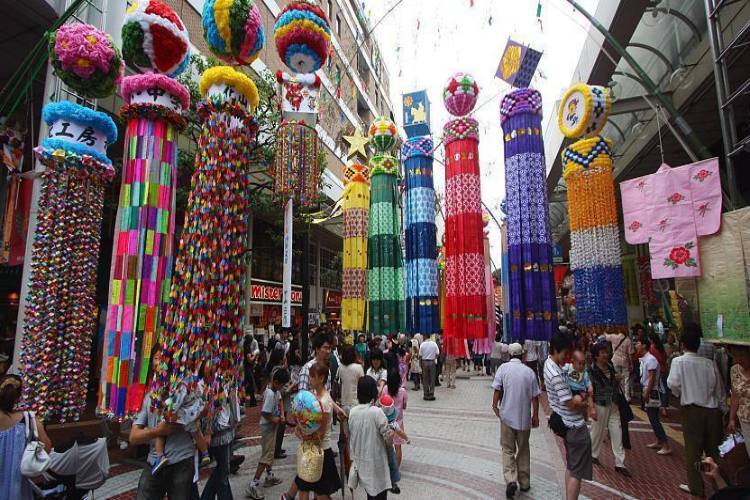
Summer in Japan is known for its hot and humid weather. Temperatures often rise above 30°C (86°F), and the air can feel quite sticky. Rain is also common, especially during the early summer which usually lasts from June to mid-July.
Despite the heat, summer is a lively time in Japan, filled with lush greenery and vibrant energy. The countryside transforms into a sea of green, making it a perfect season for outdoor activities.
From exploring sandy beaches to hiking in the mountains, there are plenty of opportunities to enjoy nature. However, the heat can be intense, so staying hydrated and taking breaks in the shade is important.
Summer is also a time of festivals and fireworks, which add to the season’s excitement. You’ll find many local festivals (matsuri) with traditional dances, music, and food stalls, creating a festive atmosphere throughout the country.
Highlights:
- Beaches and Coastal Areas: Japan has many beautiful beaches where you can swim, sunbathe, and enjoy water sports. Popular beach destinations include Okinawa, Kamakura, and Shonan.
- Hiking in National Parks and Mountains: Summer is a great time for hiking. Some of the best hiking spots are the Japanese Alps, Mount Fuji, and national parks like Daisetsuzan in Hokkaido.
Events and Festivals:
- Tanabata (Star Festival): Tanabata (Star Festival) is celebrated in early July, Tanabata is a festival where people write their wishes on colorful paper strips and hang them on bamboo branches. The festival celebrates the meeting of two lovers, represented by stars, who can only meet once a year.
- Obon Festival: Held in mid-August, Obon is a Buddhist festival honoring the spirits of ancestors. It includes traditional dances called Bon Odori, lantern lighting, and family gatherings.
- Fireworks Festivals (Hanabi Taikai): Throughout the summer, Japan hosts spectacular fireworks displays. Some of the most famous fireworks festivals are in Tokyo, Yokohama, and Nagaoka.
Travel Tips:
- Stay Hydrated and Protect Against Heat: Drink plenty of water, wear light and breathable clothing, and use sunscreen to protect yourself from the sun. Carry a hat and sunglasses for extra protection.
- Visit Cooler Regions: If the heat becomes too much, consider visiting cooler regions like Hokkaido. This northern island has milder temperatures and beautiful natural scenery, making it a great escape from the summer heat.
Autumn (September to November)
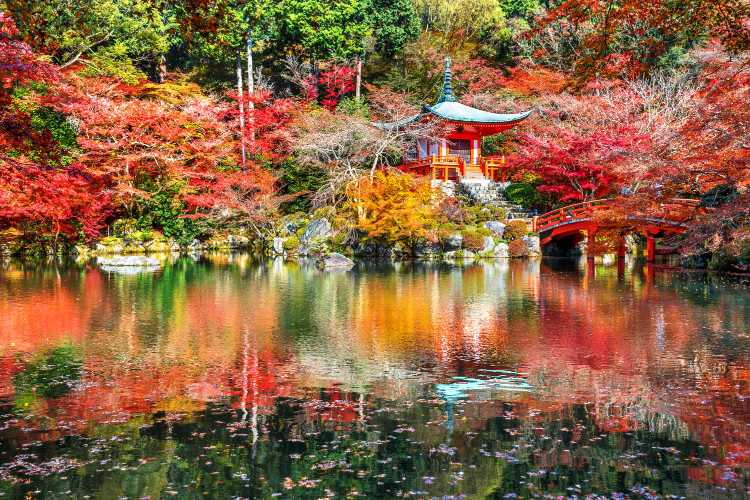
Autumn in Japan is a season of pleasant weather and stunning fall foliage, making it a popular time for sightseeing. As temperatures cool from the summer heat, the landscape transforms into a palette of red, orange, and yellow as the leaves change color.
This season is perfect for exploring the natural beauty of Japan and enjoying cultural experiences. The weather in autumn is generally mild, with temperatures ranging from 10°C to 20°C (50°F to 68°F).
The humidity drops, creating comfortable conditions for outdoor activities and travel. Autumn is also a time for many traditional festivals and local events, allowing visitors to experience Japanese culture and traditions.
Highlights:
- Autumn Foliage (Koyo) Viewing Spots: Japan is famous for its autumn foliage, known as koyo. Some of the best places to see the vibrant fall colors are in Kyoto, Nikko, and the Japanese Alps. Parks, temples, and gardens are particularly stunning during this season.
- Cultural Experiences and Traditional Festivals: Autumn is a time for various cultural events and festivals. Visitors can enjoy traditional music, dance, and food while experiencing the rich cultural heritage of Japan.
Events and Festivals:
- Tsukimi (Moon Viewing) Festival: The Tsukimi (Moon Viewing) Festival is Celebrated in September, this festival honors the autumn moon. People gather to appreciate the full moon, eat special foods like rice dumplings (Dango), and decorate with pampas grass.
- Harvest Festivals and Local Events: Autumn is also the season for harvest festivals, where communities celebrate the bounty of the season with local foods, music, and dance. These festivals provide a glimpse into rural life and traditional customs.
Travel Tips:
- Best Locations for Fall Foliage: Some of the top spots for enjoying the autumn colors are Arashiyama in Kyoto, Lake Kawaguchi near Mount Fuji, and Daisetsuzan National Park in Hokkaido. These locations offer breathtaking views and excellent photo opportunities.
- Ideal for Photography Enthusiasts: Autumn’s vibrant colors and clear skies make it a fantastic season for photography. Be sure to bring your camera to capture the stunning landscapes and cultural scenes. Additionally, visiting early in the morning or late in the afternoon can provide the best lighting for photos.
Winter (December to February)
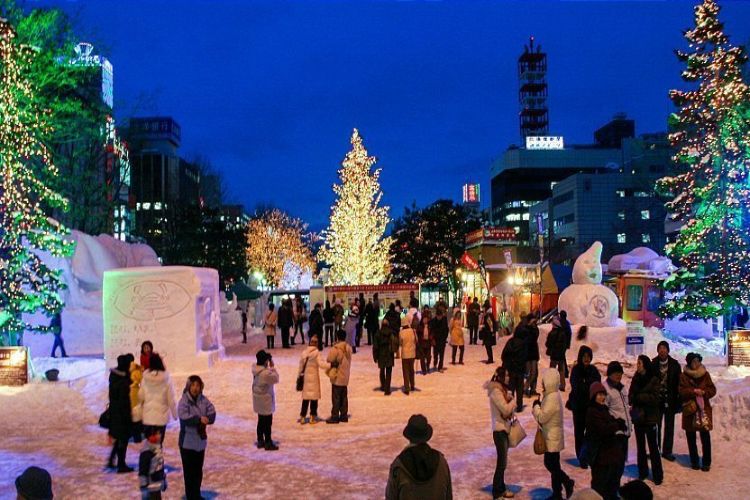
Winter in Japan is marked by cold weather and snowfall in many regions, creating a picturesque and festive atmosphere. From the snowy landscapes of Hokkaido to the crisp, clear days in Tokyo, winter offers a unique charm and a variety of activities.
This season is perfect for those who enjoy winter sports, hot springs, and cultural festivals. Temperatures can vary widely across the country.
Northern areas like Hokkaido and the Japanese Alps experience heavy snowfall and freezing temperatures, while southern regions like Okinawa remain relatively mild. Despite the cold, winter is a wonderful time to visit Japan, with fewer tourists and plenty of seasonal events.
Highlights:
- Skiing and Snowboarding: Japan is a top destination for winter sports enthusiasts. Hokkaido, with its famous powder snow, and the Japanese Alps, including popular resorts like Nagano and Niigata, offer excellent skiing and snowboarding opportunities.
- Onsen (Hot Springs) Experiences: Winter is the perfect time to relax in an onsen or hot spring. The contrast of the hot water against the cold winter air is incredibly soothing. Some of the best onsen towns include Hakone, Beppu, and Noboribetsu.
Events and Festivals:
- Sapporo Snow Festival: The Sapporo Snow Festival is held in February, this festival is one of Japan’s most famous winter events. It features large, intricate snow and ice sculptures, attracting millions of visitors.
- New Year’s Celebrations and Traditions: New Year’s is a significant holiday in Japan, marked by various traditions. Families gather for special meals, visit shrines for Hatsumode (the first shrine visit of the year), and partake in various customs to welcome the new year.
Travel Tips:
- Dressing Appropriately for Cold Weather: Be sure to dress in layers and wear warm clothing, including a good coat, gloves, hat, and scarf. Waterproof boots are also a good idea if you plan to visit snowy areas.
- Exploring Winter Illuminations and Attractions: Many cities and towns have beautiful winter illuminations, where parks and streets are decorated with millions of lights. Some of the best displays can be found in Tokyo, Osaka, and Kobe. Winter is also a great time to visit indoor attractions like museums, aquariums, and historic sites.
Conclusion
Japan offers unique experiences every season, from cherry blossoms in spring to snowy landscapes in winter. Each time of year has its charm, making it a wonderful destination no matter when you visit. Plan and book early to make the most of your trip and enjoy everything Japan offers.
If you want to read more articles like that and gain further information about traveling, please visit our website Omniwrites.com.
FAQs
Q1. When is the best time to visit Japan to see cherry blossoms?
The best time to visit Japan for cherry blossoms is during spring, from late March to early April. The cherry blossom season, or sakura, is a highlight of Japan’s spring and offers beautiful views of cities like Tokyo, Kyoto, and Osaka.
Q2. What are the top places in Japan to see autumn foliage?
For stunning autumn foliage in Japan, visit Arashiyama in Kyoto, Lake Kawaguchi near Mount Fuji, and Daisetsuzan National Park in Hokkaido. These locations are renowned for their vibrant fall colors and scenic beauty.
Q3. Is Japan a good destination for winter sports?
Yes, Japan is a premier destination for winter sports. Hokkaido and the Japanese Alps are famous for their excellent skiing and snowboarding conditions. Top winter sports resorts include Niseko in Hokkaido and various resorts in Nagano and Niigata.
Q4. What are some must-see festivals in Japan?
Japan offers many exciting festivals throughout the year. In spring, the Cherry Blossom Festivals (Hanami) are a major attraction. Summer features the Sapporo Snow Festival and spectacular fireworks events. In autumn, don’t miss the Tsukimi (Moon Viewing) Festival, and winter brings festive New Year’s celebrations and beautiful winter illuminations.
Q5. How can I avoid crowds during peak travel seasons in Japan?
To avoid crowds in Japan during peak travel seasons, consider visiting less popular destinations or traveling during shoulder seasons like late fall or early spring. Additionally, booking your accommodations and activities well in advance can help you secure the best options and enjoy a more relaxed experience.
Q6. What should I pack for a trip to Japan in the summer?
For a summer trip to Japan, pack lightweight and breathable clothing, sunscreen, a hat, and sunglasses. Also, include a reusable water bottle to stay hydrated, and consider packing a portable fan or cooling towel to help with the heat.
Q7. What are some unique experiences to have in Japan during winter?
In winter, Japan offers unique experiences such as soaking in onsen (hot springs), enjoying snow festivals like the Sapporo Snow Festival, and visiting winter illuminations in cities like Tokyo and Kobe. You can also try traditional winter foods like hot ramen and tempura.
Q8. How do I get around Japan efficiently?
Japan has an excellent public transportation system. The Japan Rail Pass is a popular option for tourists traveling long distances. For city travel, use local trains, subways, and buses. Taxis and ride-sharing services are also available in most urban areas.
Q9. What are some cultural etiquette tips to know before visiting Japan?
When visiting Japan, remember to be polite and respectful. Remove your shoes before entering homes and some public spaces. Bowing is a common form of greeting. It’s also polite to avoid talking loudly in public places and to follow local customs, such as queuing properly.
Q10. Are there any special considerations for traveling to Japan with children?
Traveling to Japan with children can be enjoyable with a bit of planning. Many attractions and accommodations are family-friendly. Consider visiting theme parks like Tokyo Disneyland, interactive museums, and kid-friendly restaurants. Japan also has excellent public facilities for families, including clean restrooms and nursing rooms.

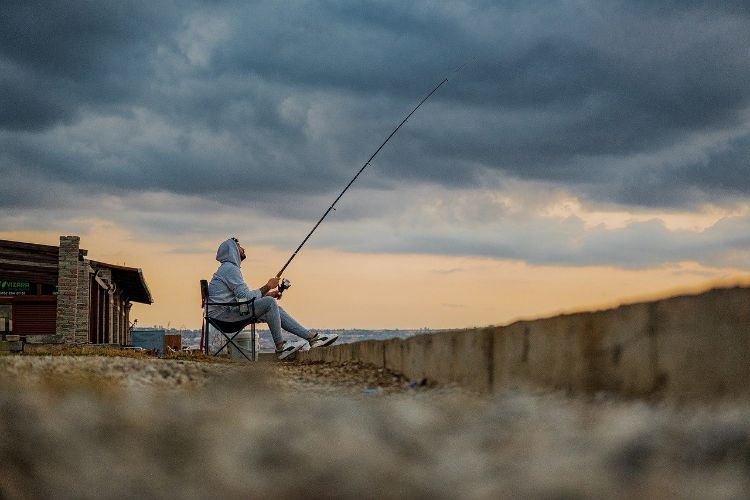
How’s the coffee culture in Japan? Any unique brewing methods I should try?
You should try siphon coffee, a unique brewing method that’s both beautiful and flavorful. Pour-over coffee is also popular, especially using the Hario V60. And don’t miss out on canned coffee from vending machines.